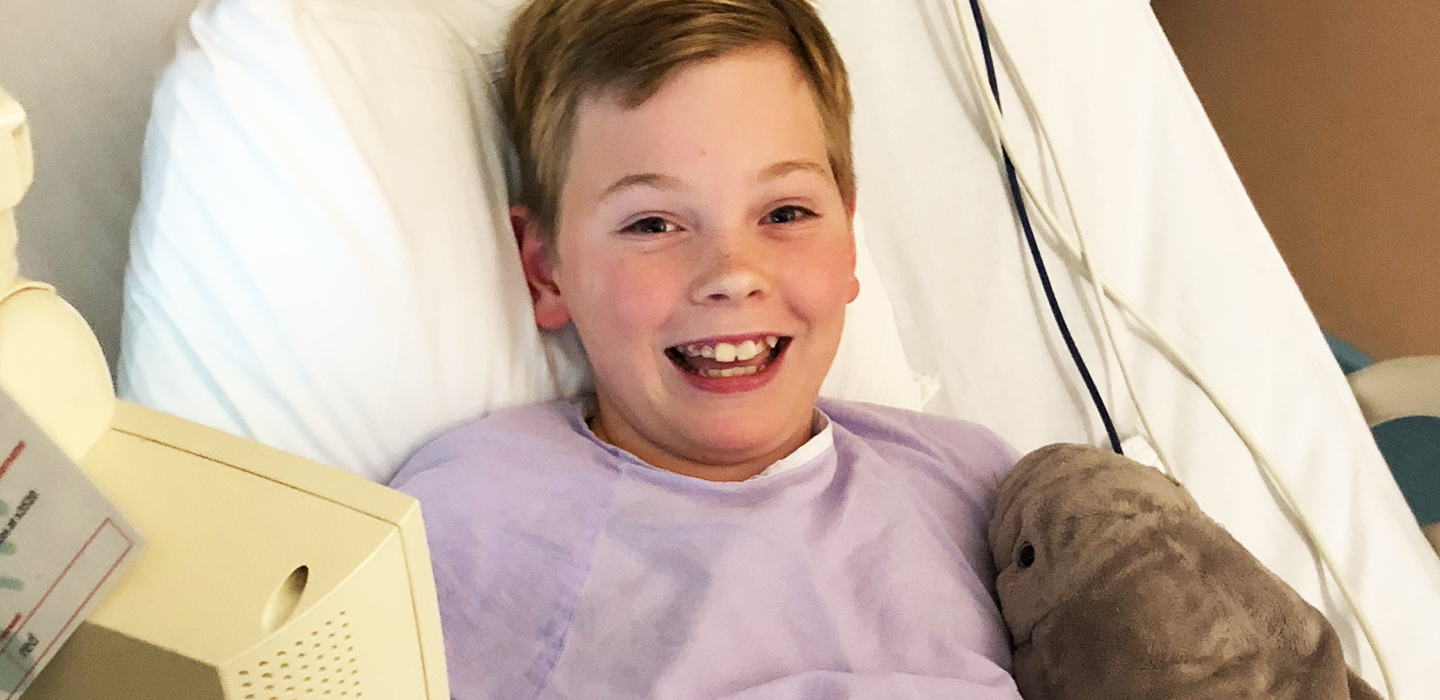Sam: An Old Soul Faces a New Challenge
Sam’s family was shocked to find out he had diabetes. With the help of our expert team, he’s staying healthy.

The signs were there: Ten-year-old Sam was drinking water insatiably. During a blockbuster action movie, he ducked out to the bathroom five times. Normally active, he seemed lethargic in the summer heat.
A quick internet search of his symptoms led Sam’s mother, Sarah, to suspect he might have diabetes. But what she didn’t expect was his doctor’s reaction after she tested his blood sugar using borrowed equipment: Go to the emergency room now.
At UCSF Benioff Children's Hospital Oakland, Sam, who had previously been in excellent health, was found to have diabetic ketoacidosis, a potentially fatal complication caused by high blood sugar triggering dangerous levels of acids in the body.
“I had no idea it was life threatening,” says his mother Sarah. “It was terrifying.”
During his five-day hospital stay, the staff went above and beyond to prepare his family for the road ahead.
“We were blown away by their support, their knowledge about type 1 diabetes, and their effectiveness with imparting all that knowledge to us,” Sarah recalls. “We had a handle on it by the time we walked out, which was huge, and since then we continue to learn and refine how we treat it.”
Much of the time, there aren’t easy answers. More than a year later, Sam’s blood sugar continues to fluctuate depending on what he eats, of course, but also with stress, physical activity, hormones, travel, and so many other day-to-day happenings in the life of a seventh grader. A few times a week, unsafe blood sugar triggers a middle-of-the-night wakeup for the family.
“There’s the immediate stress of Sam not feeling well, and the longer term stress of worrying what these periods of high blood sugar are going to do to him when he gets older,” says his father Scott. “You talk to people who have issues with vision, amputation, kidney problems. We are optimistic, but it’s still stressful.”
Sam’s expert care at UCSF Benioff Oakland helps keep his symptoms under control. Within months of his diagnosis, Sam was fitted with both a continuous glucose monitor and an insulin pump, technology that immediately detects any rises or dips in his blood sugar and administers insulin with the touch of a few buttons – helping remove some of the guesswork from the equation.
“His care team is amazing,” Sarah says. “When we need them, they respond immediately. His doctor is really good at empowering us to make decisions.”
They’ve also connected the family to community resources: a special camp and a “buddy dog” program. Now the family attends an annual Diabetes Youth Family summer camp staffed by UCSF caregivers; his father has even joined the board. And Saber, a black Labrador, accompanies Sam to sleep every night, trained by Dogs4Diabetics to sound the alarm if his blood sugar acts up.
Sam – an animal lover, swimmer and avid reader – is doing his part to be conscientious about his health. “He’s always been an old soul,” says Sarah. “That kind of maturity serves you well with diabetes.”
“You get used to it,” Sam says with a shrug. “And I still get to eat dessert.”